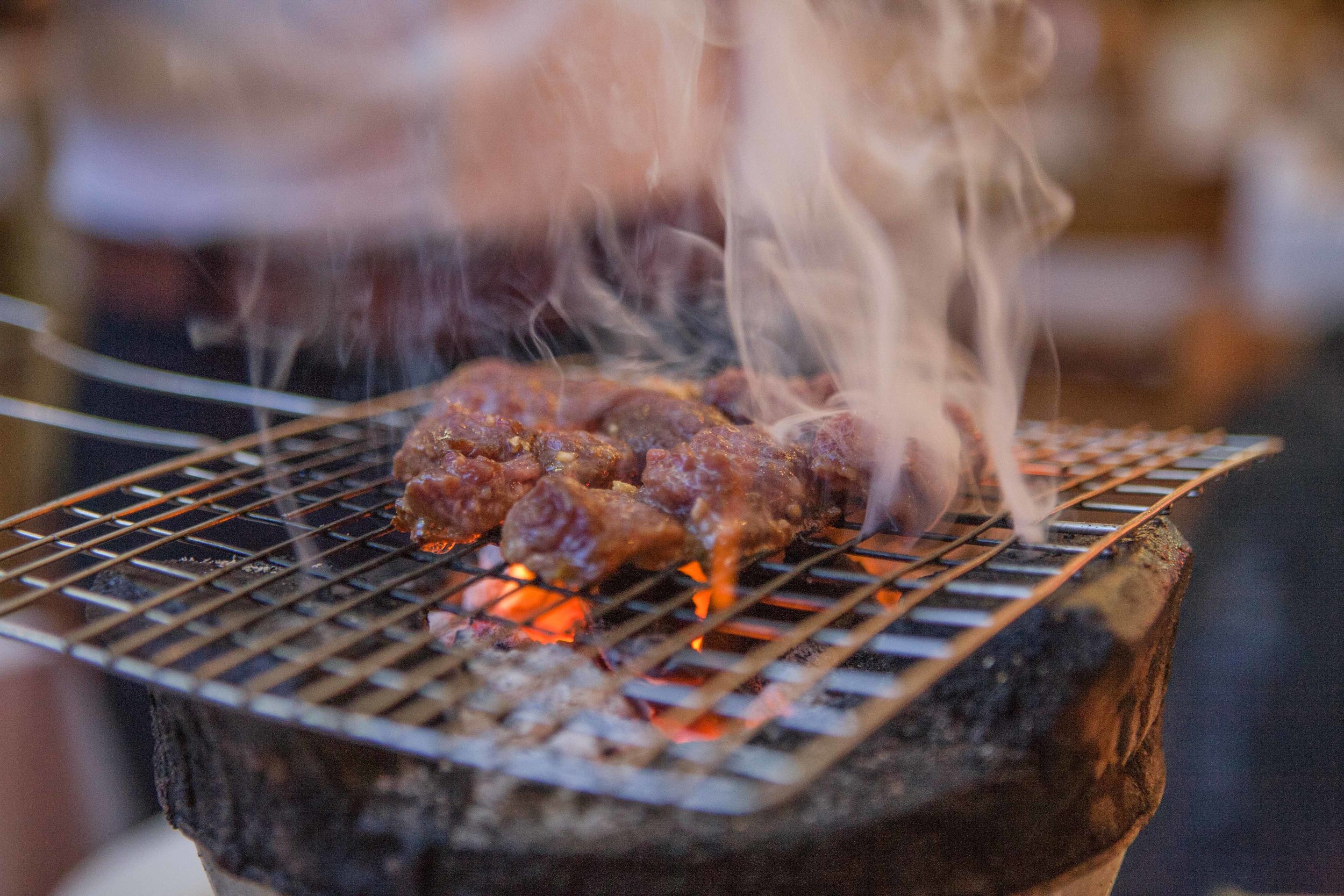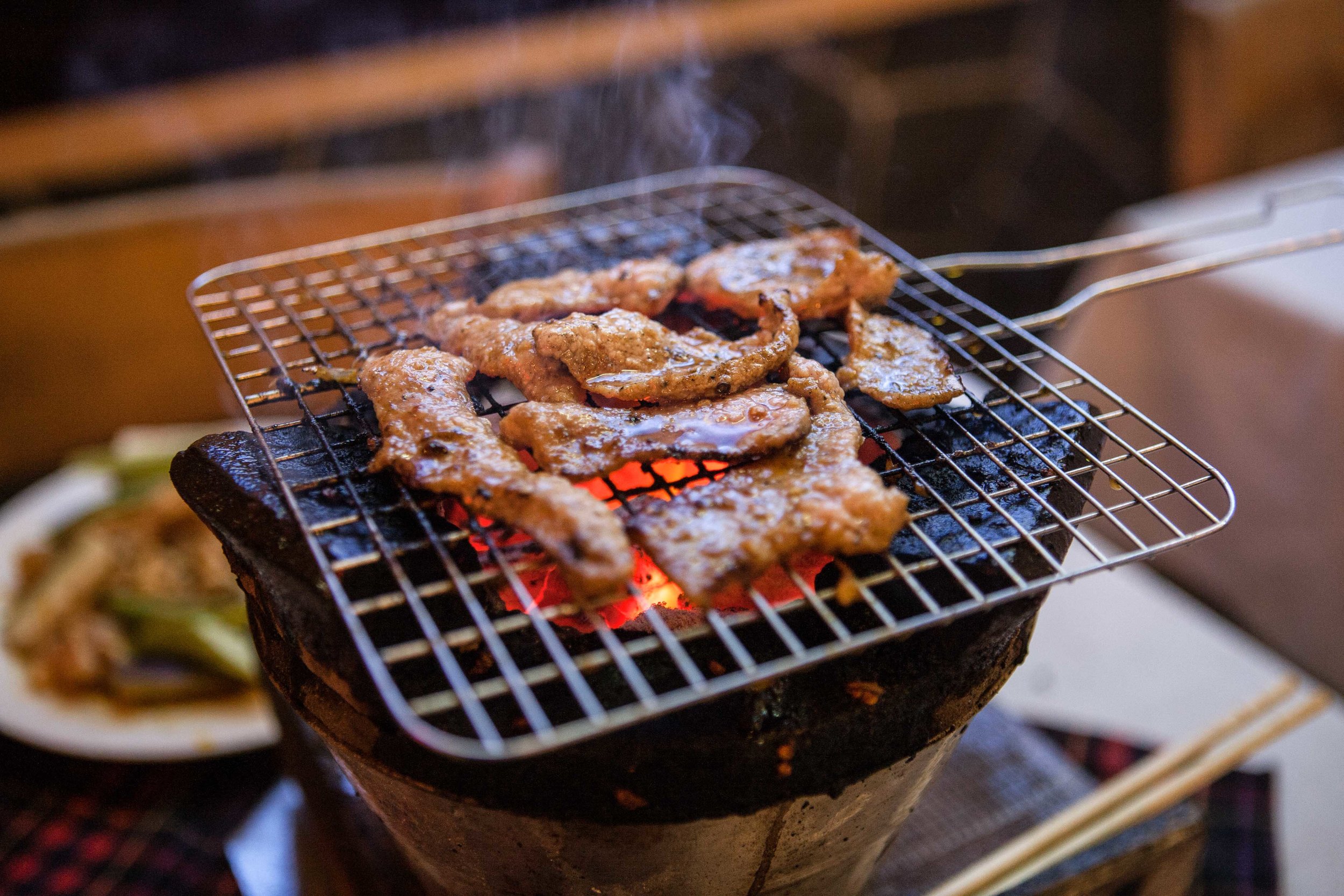Vietnamese Barbecue - The Good, The Bad & The Udder
The United States has certainly perfected the art of barbecue. Whether you prefer the sweet flavors of Kansas City, the tangy mustard sauce of South Carolina, the dry rubs of Tennessee or the thick smoke of Texas; when it comes to grilled, smoked and roasted meat, America has it down to a science. However, taking into consideration the art of grilling meat over fire has been around long before the U.S. was even a country, it stands to reason that there are other pockets of the globe that have mastered their own style of barbecue...
One of those places is Vietnam.
It doesn’t matter where you are in Vietnam, or what time of day it is, if you travel down a main road within a few minutes you will see and smell the smoke from a roaring grill billowing out the front of a street side shop. Charcoal and flame is an easy, inexpensive and effective way to cook your food – something the Vietnamese have mastered. During my time in Vietnam, I have tried many famous and traditional dishes. Most of them have been amazing but some have been a little too exotic, even for my taste. However, there was one particular place I had heard about time and time again and before I left Ho Chi Minh City; my brother Lucas was determined to take me there.
Luong Son Quan is a well-known Vietnamese style barbecue restaurant in District 1, Ho Chi Minh’s chaotic city center. Like most Vietnamese barbecue establishments, the meat Luong Son Quan is marinated ahead of time and brought out raw, then cooked tableside on a small charcoal grill. Contrary to many American style barbecue joints that are dimly lit, well worn and a little rough around the edges, this restaurant had white and tartan tablecloths with white china plates and the waiters dressed in white button down shits with bow ties. Clearly this was a fancy place, far removed from the hole-in-the-wall eateries we typically dine at when in Asia. After quickly perusing the menu and ordering a couple of Tiger brand beers, we select our proteins and a side of garlic fried rice – like all good barbecue, the sides are a key element. Fried rice is the Asian equivalent to American potato salad, and no barbecue is complete without potato salad.
To kick this feast off we ordered a plate of fried frog legs. If you are not familiar with frog meat, the taste and texture is very similar to chicken but with a slight hint of white fish, like snapper. That being said, when they come crispy fried, tossed in a slightly sweet fish sauce and sautéed with chunks of white and green onion, you can hardly tell them from chicken wings.
As we’re making our way through the frog, our grill is brought to the table, the charcoal already glowing red hot. Four plates of marinated meat quickly arrive in succession and are placed around the grill. The proteins included ostrich marinated in soy sauce and chopped garlic, goat breast and crocodile each in a garlic chili marinate and last but not least, wild boar with garlic and Chinese five spice. Each plate also came with a few slices of eggplant and okra, which were meant to be coated in the marinade and roasted over the glowing charcoal.
One by one the waiter begins grilling the meats and presenting them to us on small plates, beginning with the ostrich. Dark red and very lean, ostrich has a closer resemblance to beef than any of its feathered friends. When cooked properly, grilled to medium just a few minutes on each side, ostrich is amazingly tender. The soy and garlic marinade ensured it was perfectly seasoned and it sure didn’t last long. In the matter of a few short minutes we had finished the ostrich with a healthy serving of garlic fried rice and the leftover sautéed onions from the frog legs.
After the ostrich the waiter begins on the wild boar which I was very excited about - I love wild boar. However, this boar was so tough it was almost inedible. Which was unfortunate because the garlic and chili marinade was had just the right amount of lime to cut the richness of the boar fat. Luckily the crocodile was coated in the same seasoning and proved to be just as delicious and exponentially more tender, however still not quite melt in your mouth. Gingerly picking around the odd bone was a small price to pay for the reward of such a flavourful meat which is most similar to a dense white fish such as wahoo or mahi mahi.
Left and Center: ostrich / Right: goat breast
Next up was the goat breast, which again was incredibly delicious, but had a very odd and fatty texture that neither of us particularly enjoyed or expected. It wasn’t until I sat down to write this article and I did a quick internet search of “goat breast” (which brought up a whole slew of interesting photos, some of which border on bestiality. Just take my word for it) that I realized what we had eaten was actually the mammary gland of a goat. Perhaps “goat udder” would have been a better translation on the menu! There were two clues that should have tipped me off that we were about to eat something out of the ordinary. The first is when we placed our order, the waiter looked at us for a second and repeated in broken English “it’s goat breast” pointing to his chest. Assuming it was a cut from under the shoulder we nodded in acceptance and off he went… Second, the name itself should have raised a red flag as I have been a chef for nearly 15 years and I have never seen or heard of goat breast on a menu. I’ve never cooked it and I’ve definitely never eaten it before, alas menus in Asia are notorious for their incorrect and often comical translations, so I didn’t even give it a second thought. But hey, what is an Asian food tour without eating a little mammary gland, right? Anyway, thanks to the marinade it was delicious and the texture became much easier to stomach after a few extra minutes on the grill.
Overall, it was a fantastic experience and we had more food than we could possibly eat. It was the perfect last meal, bringing a close to my time in Ho Chi Minh City. The bill including two rounds of beer was US $50 dollars. Gotta love Vietnam!
-Dylan
Luong Son Quan style marinades
Each recipe is good for one pound of prepared meat. Cut the meat into strips about 2-3 inches long and 1/8 of an inch thick, against the grain of the meat.
Monosodium glutamate, commonly known as MSG, is a flavor enhancer that can be found in many Asian markets. It has been the subject of much controversy over the years, however it's included in these recipes for authenticity as these are the recipes as they were given to me by the Chef at Luong Son Quan. Feel free to omit it if you wish.
Soy & Garlic Marinade – for ostrich, duck, beef, pork, chicken or octopus
¼ C soy sauce
2 Tbsp vegetable oil
6 cloves of garlic, chopped
1 Tbsp sugar
1 Tbsp Monosodium glutamate
Garlic & Chili Marinade – for crocodile, wild boar, chicken, beef or frog
2 Tbsp vegetable oil
6 cloves garlic, chopped
2 tbsp kosher salt (add salt just before grilling)
1 Tbsp Monosodium glutamate
1 tsp dark chili powder
5 Spice Marinade – for wild boar, pork, chicken, duck or squid
2 Tbsp vegetable oil
6 cloves garlic, chopped
2 tbsp kosher salt (add salt just before grilling)
1 Tbsp Monosodium glutamate
1 Tbsp Chinese 5 spice powder






